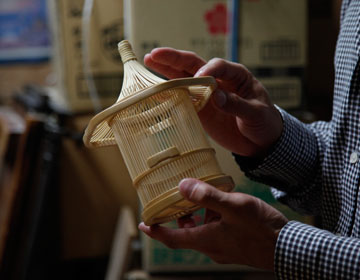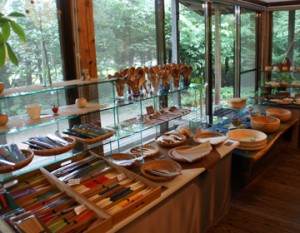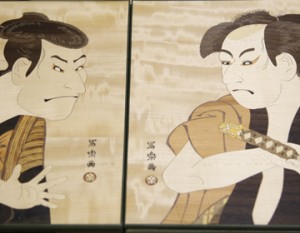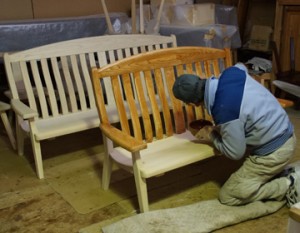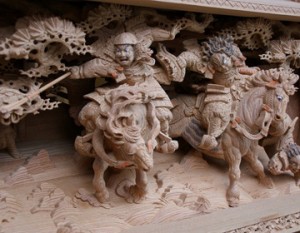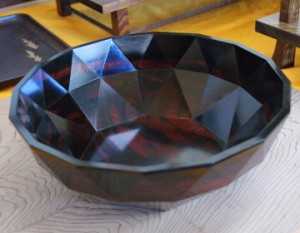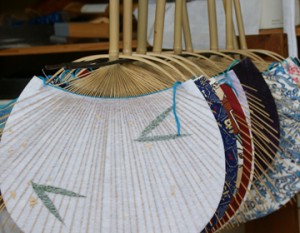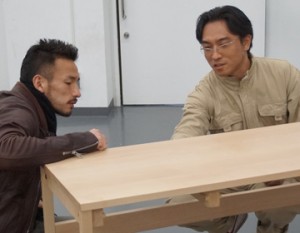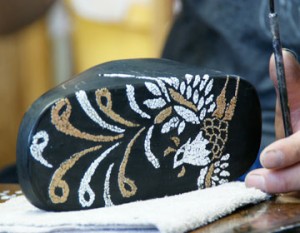Suruga bamboo craft from Edo period
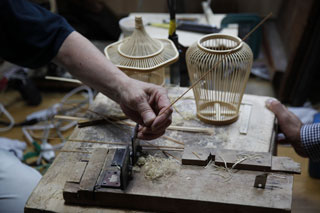
With instruction from Eiichi Kuroda, the traditional craftsman, Nakata took to his task with a serious expression on his face.
Splitting bamboo in line with the fiber, and pressing it onto a heated ”doran” to create the round shape.
Then Kuroda makes pin holes about 1 mm in diameter.
Nakata then takes the thin bamboo strands, bends them with an electric soldering iron, and weaves them into the holes Kuroda made, one by one.
If the bamboo sticks are not bent exactly the same way, the overall lines look uneven and are not beautiful in the finished product. This is a task which requires a delicate touch.
The craft Nakata had experienced was the bamboo craft called ”Suruga Bamboo Sensuji Craft”.
By bending or weaving the bamboo sticks, and combining them with other items, flower vases, sweets jars, lanterns and insect cages can be made. It started when during the Edo era, the samurai warriors took them on as side jobs. They were traditional crafts sold as precious souvenirs for people who crossed the Tokaido Road.
The traditional and the modern
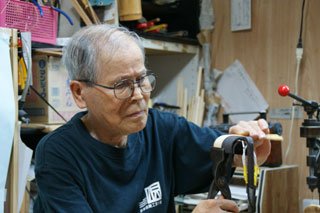
In Kuroda’s family, they began applying a coat of lacquer on the Suruga bamboo sensuji craftwork. On his mother’s side, his grand father and uncle were involved in bamboo craft making, and everybody around him were all craftsmen. But the town burned down during the Great Shizuoka Air Raid when Kuroda was 14 years old.
When Kuroda returned from where he had evacuated at 16, he thought ”I need to have a skill.” He became an apprentice at his uncle’s workshop and was able to become independent five years later. It has been more than 60 years since then. Kuroda has been making Suruga bamboo sensuji crafts exclusively since the beginning.
One of the characteristics of Kuroda’s work is the unique shape.
He told us, ”You always have to make new things which match the time, or you will end up losing tradition as well.” Finding inspiration in everyday life and objects, he tries to create new shapes using new weaving techniques.
His devotion to the craft has been recognized, and in 2007, he received the Order of the Sacred Treasure.
His pieces also have modern feel, so it fits well not only in tea rooms or Japanese style rooms, but also in western style rooms as a Japanese interior decoration.
The delicately carved Suruga bamboo sensuji craft adds elegance.
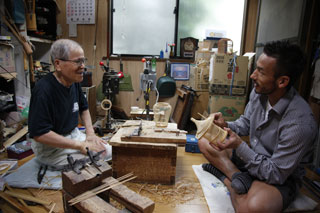
Nakata was working silently, but eventually he raised his face and said ”I did well, didn’t I?” and raised his thumb.
Kuroda nodded with a smile on his face and said a single word, ”Good!”.
A sensuous Suruga bamboo sensuji crafted flower vase was completed.



